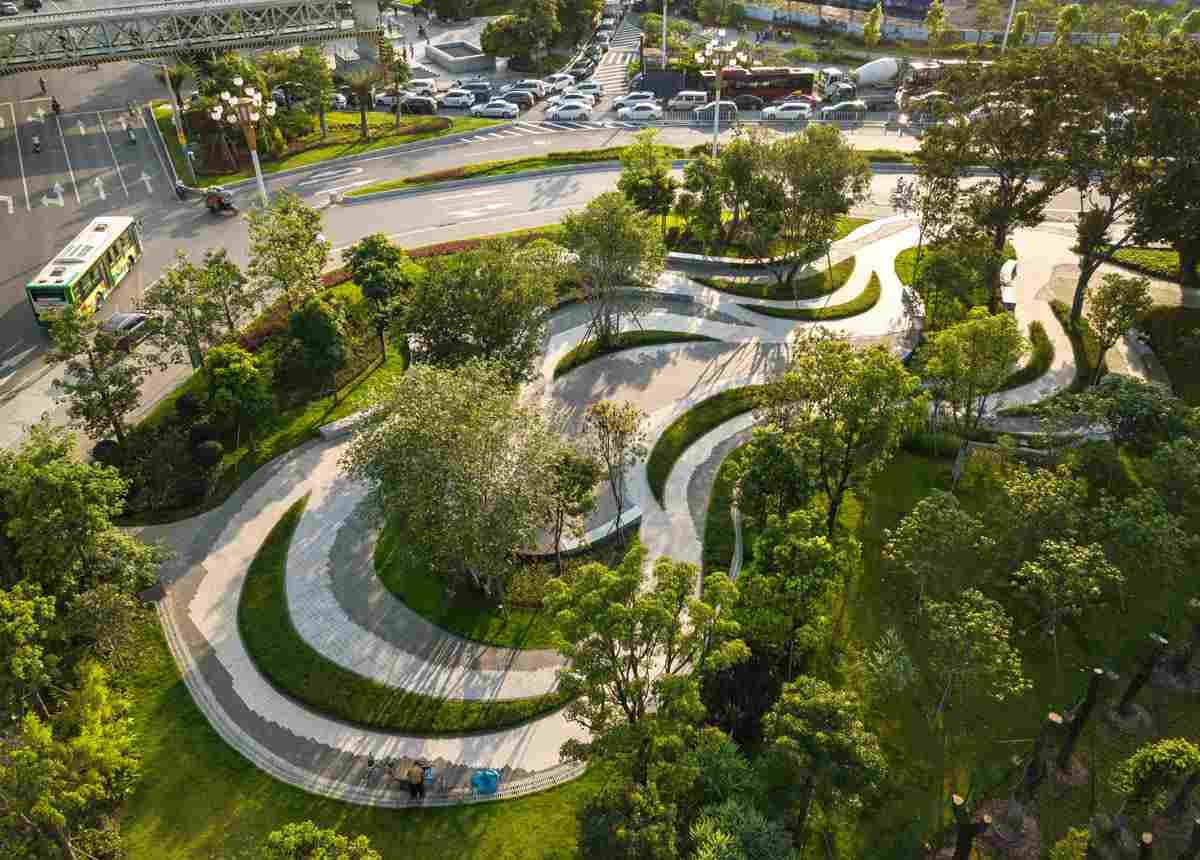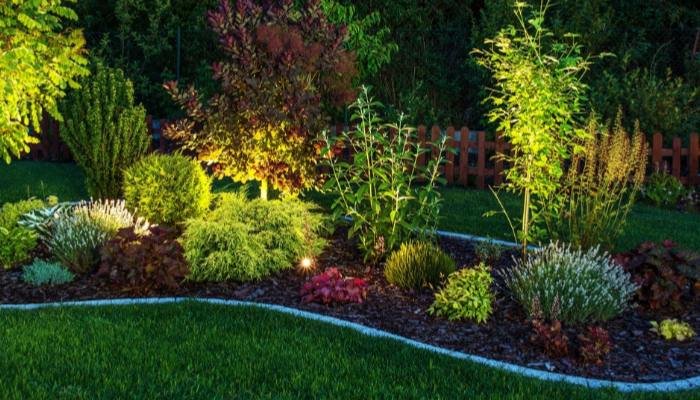When it comes to designing a landscape, there are several key factors to keep in mind. First, consider the climate of the area where the landscaping will be done. This includes factors like temperature ranges, rainfall patterns, and seasonal changes. Soil type is another crucial consideration, as it affects plant growth and drainage. Local flora and fauna can guide plant selection to support biodiversity. Maintenance needs, such as watering and pruning requirements, should align with the client’s preferences and schedule. For example, Evergreen Landscaping of Cincinnati would take all these factors into account to create a sustainable and visually appealing outdoor space.
1. Climate and Weather Conditions
The climate of a region is one of the most fundamental aspects to consider. Different plants thrive in different climates, so understanding the average temperature ranges, humidity levels, rainfall patterns, and even wind conditions can help determine which plants will flourish and which might struggle. For instance, if you’re designing a landscape in a hot and arid climate like the desert, you’d want to choose drought-tolerant plants that can withstand intense sunlight and sparse rainfall. Conversely, in a cooler and wetter climate, you might opt for plants that require more moisture and can handle colder temperatures.
2. Soil Type and Quality
Consideration of soil type and quality is essential in landscaping renovations services. Understanding the soil’s characteristics such as texture, pH level, drainage, and nutrient content guides the selection of suitable plants and informs soil improvement strategies. Landscaping renovation services often include soil testing, amending soil with organic matter, and implementing erosion control measures to enhance soil health and support healthy plant growth. By addressing soil quality, landscaping renovations can achieve sustainable and thriving outdoor environments.
3. Topography and Site Analysis
Understanding the topography of the landscape site is essential. Factors such as slopes, elevation changes, existing vegetation, water features, and sunlight exposure all impact design decisions. Sloped areas, for instance, might require terracing or erosion control measures, while areas with ample sunlight can support sun-loving plants. Conducting a thorough site analysis helps identify opportunities and challenges that inform the design process.
4. Client Preferences and Needs
Every client has unique preferences, needs, and lifestyle considerations that should shape the landscape design. Some clients might prioritize low maintenance landscapes, while others may desire specific features like a vegetable garden, outdoor entertainment areas, or child-friendly spaces. Understanding the client’s vision, budget, maintenance capabilities, and usage patterns ensures the final design meets their expectations and enhances their quality of life.
5. Native Plants and Biodiversity
Native plants and biodiversity are fundamental aspects of landscaping services. Incorporating native species promotes ecological balance, supports local wildlife, and enhances environmental sustainability. By prioritizing biodiversity in landscape designs, landscaping services contribute to healthier ecosystems and resilient outdoor spaces. Additionally, landscaping services that specialize in native plants understand their benefits in terms of water conservation, reduced maintenance, and long-term sustainability, providing clients with landscapes that thrive in their natural surroundings.
6. Water Management and Irrigation
Efficient water management is critical in landscape design, especially in regions prone to drought or water restrictions. Implementing smart irrigation systems, such as drip irrigation or rainwater harvesting, minimizes water waste and promotes sustainable practices. Designing landscapes with water-efficient plants, mulching to retain soil moisture, and incorporating permeable surfaces also contribute to water conservation efforts.
7. Functional Layout and Traffic Flow

In addition to functional layout and traffic flow considerations, adding privacy to your Liberty Township landscape through fences, screens, and plantings is crucial. Strategic placement of these elements not only enhances privacy but also defines spaces, creates visual interest, and contributes to a sense of tranquility. Whether it’s using tall shrubs as natural screens or incorporating decorative fences, integrating privacy solutions into the design ensures a comfortable and secluded outdoor environment.
A well-designed landscape considers both aesthetics and functionality. The layout should facilitate smooth traffic flow and access to various areas, such as pathways, seating areas, outdoor kitchens, and garden beds. Creating focal points, defining zones for different activities, and incorporating hardscape elements like patios or decks enhances usability and enhances the overall experience of the outdoor space.
8. Seasonal Changes and Year-Round Appeal
Designing for seasonal changes ensures that the landscape remains visually appealing and functional throughout the year. Incorporating a mix of plants with different bloom times, foliage colors, and seasonal interest provides year-round beauty. Evergreen plants maintain their foliage year-round, adding structure and color consistency, while deciduous plants offer seasonal variation with their changing foliage and blooms.
9. Sustainability and Environmental Impact
Sustainable landscape design aims to minimize environmental impact while maximizing benefits. This includes using eco-friendly materials, incorporating native plants, reducing water consumption, promoting wildlife habitat, and minimizing chemical usage. Practices like composting, mulching, and integrated pest management contribute to a more sustainable and resilient landscape.
10. Maintenance Requirements

Consideration of maintenance needs is crucial to ensure the long-term success of the landscape design. Factors such as plant selection, irrigation systems, hardscape materials, and ongoing care play a role in determining maintenance requirements. Designing with low-maintenance principles in mind, such as selecting drought-tolerant plants or using durable materials, can reduce the time and effort needed for upkeep.
11. Budget and Resource Allocation
Establishing a realistic budget and allocating resources appropriately is essential in landscape design. Factors such as plant costs, labor expenses, materials, equipment, and ongoing maintenance should be considered to ensure the project stays within budget constraints. Prioritizing key elements based on client preferences and long-term goals helps optimize resource allocation and project outcomes.
12. Local Regulations and Codes
Compliance with local regulations, zoning ordinances, and building codes is necessary when designing a landscape. This includes considerations such as setback requirements, stormwater management guidelines, tree preservation ordinances, and permits for hardscape installations. Working with local authorities and understanding regulatory requirements ensures that the landscape design meets legal standards and avoids potential issues.
13. Climate Change Resilience
With climate change impacting weather patterns and environmental conditions, designing landscapes with resilience in mind is increasingly important. This may involve selecting climate-adaptive plants, incorporating green infrastructure for stormwater management, designing heat-resilient landscapes, and implementing strategies to mitigate climate-related risks such as flooding or extreme temperatures.
14. Aesthetic Harmony and Design Principles
Incorporating art and sculpture into your landscape renovation adds an extra dimension of aesthetic harmony and design principles. These elements not only serve as focal points but also contribute to the overall visual appeal and storytelling of the outdoor space. By strategically placing art pieces or sculptures in landscape renovation, you can create engaging and memorable experiences that enhance the beauty and character of the landscape.
Aesthetic considerations play a significant role in landscape design, focusing on creating visually appealing and harmonious outdoor spaces. Principles of design such as balance, proportion, scale, rhythm, unity, and focal points guide the arrangement of elements like plants, hardscape features, lighting, and decorative accents. A well-designed landscape strikes a balance between functionality, sustainability, and aesthetic appeal.
15. Collaboration and Communication
Effective collaboration and communication are essential throughout the landscape design process. This includes working closely with clients to understand their vision and goals, collaborating with architects, engineers, contractors, and other professionals involved in the project, and maintaining clear communication channels to ensure that design intent is translated into reality seamlessly.
By considering these factors holistically and integrating them into the landscape design process, you can create outdoor spaces that are not only visually stunning but also sustainable, functional, and tailored to the unique needs and preferences of the clients and the environment.
FAQs
What are considerations needed for landscape design?
Considerations for landscape design include climate and weather conditions, soil type and quality, and client preferences and needs. It’s crucial to select plants that thrive in the local climate and soil, while also incorporating elements that align with the client’s vision and usage requirements. Additionally, factors such as water management, maintenance needs, and environmental sustainability should be integrated into the design process for a successful and resilient landscape.
What are the factors of landscaping?
The factors of landscaping include climate and weather conditions, soil type and quality, and site analysis such as topography and existing vegetation. Client preferences and needs, including budget and maintenance capabilities, are also significant factors that influence landscape design decisions. Incorporating native plants, sustainable practices, and aesthetic considerations further contribute to creating functional, visually appealing, and environmentally friendly outdoor spaces.
What are the 10 principles of landscape design?
The ten principles of landscape design are unity, balance, simplicity, variety, emphasis, sequence, scale, proportion, focalization, and rhythm. Unity refers to the cohesion and harmony of the design elements, while balance ensures visual stability. Simplicity and variety create interest, emphasis highlights focal points, and sequence guides movement throughout the landscape. Scale and proportion maintain proper relationships, focalization draws attention, and rhythm adds visual flow and continuity to the design.
What should be considered when drawing landscapes?
When drawing a landscape, consider the scale and proportions of elements to ensure a balanced composition. Pay attention to details such as textures, colors, and plant arrangements to create visual interest and harmony. Additionally, incorporate perspective and depth techniques to depict spatial relationships and convey a sense of realism in the landscape drawing.
What are the 5 basic elements of landscape?
The five basic elements of landscape design are line, form, texture, color, and scale. Lines define the edges and shapes within the landscape, while forms represent the overall structure and mass of objects like plants and hardscape features. Texture adds visual and tactile qualities, color brings life and emotion, and scale ensures elements are appropriately sized and balanced within the landscape composition.
Conclusion
Designing a landscape is a complex yet rewarding endeavor that requires careful consideration of numerous factors. From climate and soil type to client preferences and sustainability, each element plays a crucial role in shaping the final outcome. By integrating these factors into the design process, landscape architects and designers can create outdoor spaces that are not only visually captivating but also functional, resilient, and harmonious with their surroundings.
Ultimately, a successful landscape design is one that balances aesthetics with functionality, promotes biodiversity, conserves resources, and enhances the overall quality of life for the users. It’s a collaborative effort that involves understanding the site, leveraging natural elements, incorporating sustainable practices, and communicating effectively with clients and stakeholders.
As we continue to face challenges such as climate change and urbanization, landscape design plays an increasingly vital role in creating resilient and adaptive outdoor environments. By embracing innovation, embracing sustainable practices, and fostering a deep connection with nature, landscape designers can shape landscapes that inspire, rejuvenate, and thrive for generations to come.
